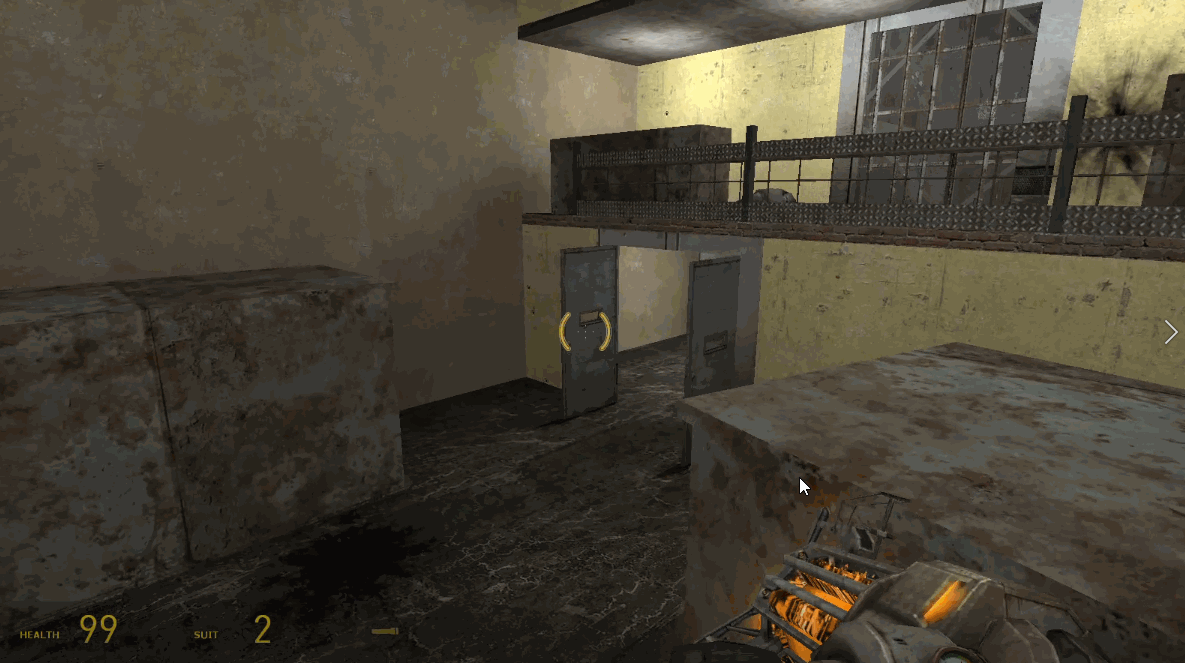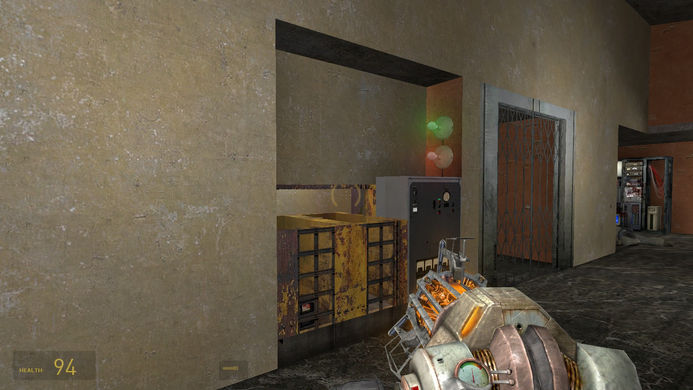
A WAY OUT
DEVELOP INFO
Game Engine:
Game:
Mode:
Start Date:
Shipped Date:
Time Spent:
Source SDK, Hammer
Half Life 2
Single Player Mini Level
11/09/2019
12/09/2019
100 - 120 Hours
LEVEL OVERVIEW
Unlike the standard Half-Life series, the level "A Way Out" provides unique gameplay of solving routing puzzles and flushing combat encounters.
The player acts as the main character Gordon, who is captured in an abandoned factory when he's on a mission with his ally, Alyx. When Gordon wakes up, he finds himself in a locked room and Alyx in the next room. Killing enemies, collecting batteries, and unlocking doors, then he will find the solution to escape with her.
DESIGN GOALS
-
Designed and built a scene with five significant gameplay rooms
-
Developed two unique combat encounters, requiring players to use tactical thinking
-
Scripted a "Battery Pressure Plate" mechanic and created a routing puzzle based on the mechanic
-
A fully polished environment with 5-10 minutes of gameplay
GAME TRAILER
GALLERY
GAMEPLAY VIDEO
OVERVIEW MAP

DESIGN METHODS
Goal 1: Routing Puzzle
-
It should fit the original gameplay well.
-
It should require the player's logical thinking.
Solution:
-
Start with fundamental key puzzles.
-
Using gravity gun to reuse the keys.
-
Twist room layouts to reuse resources.




Goal 2: Classic FPS Encounter
-
At least 2 different kinds of combat.
-
Combat should require some technical thinking.
Solution:
-
Wisely use cover to direct the player.
-
Script enemy route to draw player's attention.
-
Watchtower room, attack, and then use it.



Goal 3: Reinforce Map Memorizing
-
The player should be able to remember the room layouts.
-
The player should be able to distinguish each room.
Solution:
-
Windows and glass doors build up the connection between rooms.
-
Rooms are painted with different textures in color.
-
Rooms are decorated with different kinds of objects.

POST MORTEM
What went well?
-
A Solid Puzzle Working Well With The Level
The puzzle of repeatedly using three batteries to open seven doors worked pretty well. It started with one battery, then improved to two. When the player entered the last room with three battery slots, he could go back to the start room and re-use one battery instead of exploring a new room.
-
Well-scripted combat encounters in the level
There were two kinds of enemy encounters at this level. At first, enemies appeared from where players were intended to go. Players had to fight with them, and when they killed them, newly spawned enemies led them to the next spot.
In the second wave combat, some enemies were performing the same, while others were guarding somewhere and kept shooting at the player. That is also a method of forcing the player to move and using cover to reach somewhere.
What went wrong?
-
Many ways to break the level during the Initial-Gameplay milestone
When using a gravity gun to fetch a battery, the door can be closed before the player got the battery in hand, or the player shot the battery away and could not pass the door any longer. The experience of fixing these bugs was painful because each time an existed bug was fixed, a new bug appeared.
Thankfully, there was plenty of time to refine the element and do playtest, which allowed me to fix most of them before launching.
What I learned?
-
Player thoughts are quite different from a designer thought
There were many interesting moments from the paper design. However, some of them were not a 100% player thought. As a result, they did not work at all.
As a designer, it is not a bad thing to be immersed in some creative ideas, however, it is also important to identify the risks coming upon with these ideas.











